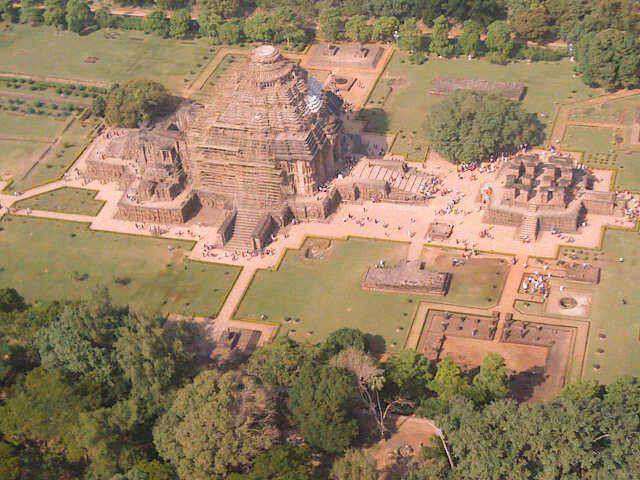Odisha Chief Minister’s letter to the Culture Minister for a probe into the neglect of the Konark Temple by the Archaeological Survey of India is a knee jerk reaction and just a formality. The State officials are aggrieved that the replacements of the damaged stone blocks is being done with plain stones. Little do they know that these are UNESCO guidelines, which the ASI is compelled to adhere. If they dither, then we may lose the World Heritage Site status that has been accorded by UNESCO.
The problems are not just the manner in which the conservation is being done. The criminal neglect of the ASI towards the preservation of the Sun temple and the other heritage structures of the State is a tragic matter. The State’s own Archaeology wing is s defunct department which too is responsible for the dismal state of the State’s heritage.
The Archaeological Survey of India insists that Konark has one of the longest conservation histories in India. The history of conservation of the Sun Temple spans more than one century. There were more than 11 reports prepared by different authorities in different times. Except for three reports, all the other reports were just ignored. Absolutely no action has been taken on the last seven reports.
The first report was prepared by Bishan Swarup, an engineer who worked at the site from 1901-04. It was he who realised that the edifice faced an imminent collapse and had it filled up with sand. The initial masonry work done under his supervision saved the temple from being completely destroyed. Swarup had given detailed suggestions for the further upkeep of the temple, but these were just forgotten.
The next committee was formed in 1950, during a meeting held at the Circuit house in Bhubaneswar. It was chaired by Biswanath Dash and had on its panel C.M.Master, an eminent architect from Bombay. None of the recommendations were put in place.
The third committee was formed in 1953, this too under the Chairmanship of Biswanath Das and the recommendation for erection of scaffolding was implemented.
In 1978, the ASI constituted the Konark Expert Committee which held its first meeting on the 7th November at Konark. For the first time, a serious view of the problem was taken and the committee was chaired by M.N.Deshpande, the then DG of the ASI. The horticultural development of the precincts was mooted and implemented.
After the collapse of five stone blocks from the main temple, structural conservation was undertaken between 1985-90. Based on this, scaffolding to some vulnerable sections was done. Another report of the Scientific Branch of the ASI made recommendation on Chemical Preservation, but nothing was done.
In 1979, the Unesco Experts Recommendation on Conservation of Konark was given to the Government of India. After declaring it a World Heritage Site, Unesco once again appointed a committee headed by two experts of international repute, Sir B M Fielden and P Beckman in 1987. They described the state of the temple as alarming and advised immediate preventive measures. After the hue and cry died down, this report too was confined to the dark rooms of the ASI.
The Italian expert Prof Ing. Giorgio Croci made a Structural Analysis of the Jagamohan in 1997. In 2010, the ASI called world experts and erected temporary scaffolding so that they could inspect the top of the temple. The committee made several recommendations, including that of removing the sand. One of the suggestions was to drill a hole and send endoscopic video graphic cameras to assess the state of the interior of the temple.
According to A.B.Tripathy, Convener, INTACH Odisha, the temple is in a precarious condition due to the sheer neglect by the ASI. He along with other INTACH members was a part of the team which examined the structure in 2010. The recommendations for immediate removal of the sand by the experts were ignored. Experts from the IITs too had given their opinions for removal of the sand. The Central Building Research Institute at Roorkee had analysed the stone blocks and given their reports. The ASI has done nothing.
Anil Dhir, another INTACH member, who is also the Secretary of the Konark Suraksha Samiti, says that the ASI is apathetic to the Sun Temple. This year too, like previous years, the structure was flooded nearly half a dozen times, causing alarm and panic among the locals. Repeated agitations by local stakeholders, whose livelihood is intricately linked with the temple, has fallen on deaf years.
A nexus of the ASI and local mafia have made the place into a crime den. There is rampant corruption in the granting of contracts by the ASI to political henchmen of the ruling party. The High Court of Odisha had appointed a amicus curiae for looking into the neglect. Even though he submitted his report three years back, no steps have been taken.
According to Dhir, at one early stage of restoration in 1910, a British Commissioner is said to have remarked that not one rupee should be spent on the monument—the sooner it falls, the better. The way the ASI is working, this may well happen—and very soon.

